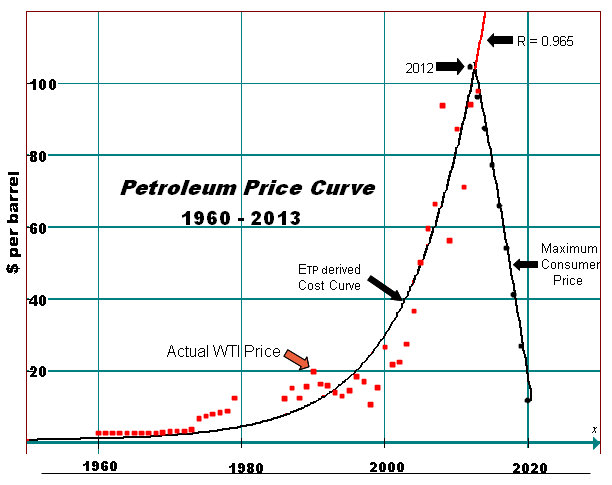Hi Everyone.
Prior to this recent activity, I hadn't posted anything on this fine forum for a couple of years. During my time away, I learned some important new information I wanted to share here. But I realized there would likely be some strong resistance to what I had to say. I needed an effective way to communicate some difficult information, so I came up with a plan.
My big 4 part plan:
1) Introduce the simple Futilitist Collapse Challenge on the "Apocalypse Soon?" soon thread. Check.
I was correct about the resistance to the even the basic idea, which is simply self evident from current oil price conditions! The reactions are even funnier because no one is prepared for what is coming up next. When no one even takes the Futilitist Collapse Challenge seriously, I move immediately to step 2.
2) Introduce the Etp model on the "Apocalypse Soon?" thread and simultaneously give it it's own thread in the Physics section. Check.
I figured this would stump the crowd on "Apocalypse Soon?", and it did, for about 2 days. I had hoped to put the Etp model in front of some folks with some physics knowledge to ratify the Etp model, which would slam dunk the debate on "Apocalypse Soon?". But that part of the plan doesn't seem to be going too well, either. So, I need to improvise a bit at this point and introduce an intermediate step:
2b) Invite rpenner to join us.
Hey rpenner, a lot of people here think you are the big physics wiz on this site. Please join this discussion. You are sorely needed.
3) I am in touch with the creator of the Etp model, B. W. Hill. I am now offering to relay any serious or highly technical questions concerning the Etp model to him. I will then post his answers here on this thread.
4) If step 3 seems to be producing some real progress on understanding the Etp model, and people promise to behave, I will invite B. W. Hill here to directly answer any questions that anyone might have.
Do you guys know what a tar baby is?
---Futilitist
Prior to this recent activity, I hadn't posted anything on this fine forum for a couple of years. During my time away, I learned some important new information I wanted to share here. But I realized there would likely be some strong resistance to what I had to say. I needed an effective way to communicate some difficult information, so I came up with a plan.
My big 4 part plan:
1) Introduce the simple Futilitist Collapse Challenge on the "Apocalypse Soon?" soon thread. Check.
I was correct about the resistance to the even the basic idea, which is simply self evident from current oil price conditions! The reactions are even funnier because no one is prepared for what is coming up next. When no one even takes the Futilitist Collapse Challenge seriously, I move immediately to step 2.
2) Introduce the Etp model on the "Apocalypse Soon?" thread and simultaneously give it it's own thread in the Physics section. Check.
I figured this would stump the crowd on "Apocalypse Soon?", and it did, for about 2 days. I had hoped to put the Etp model in front of some folks with some physics knowledge to ratify the Etp model, which would slam dunk the debate on "Apocalypse Soon?". But that part of the plan doesn't seem to be going too well, either. So, I need to improvise a bit at this point and introduce an intermediate step:
2b) Invite rpenner to join us.
Hey rpenner, a lot of people here think you are the big physics wiz on this site. Please join this discussion. You are sorely needed.
3) I am in touch with the creator of the Etp model, B. W. Hill. I am now offering to relay any serious or highly technical questions concerning the Etp model to him. I will then post his answers here on this thread.
4) If step 3 seems to be producing some real progress on understanding the Etp model, and people promise to behave, I will invite B. W. Hill here to directly answer any questions that anyone might have.
Do you guys know what a tar baby is?
---Futilitist
Last edited:



 Your comment is useless and distracting. Are you intentionally trying to create confusion? We are obviously not talking about the IEA's ETP model. And I am sure you know that, as well.
Your comment is useless and distracting. Are you intentionally trying to create confusion? We are obviously not talking about the IEA's ETP model. And I am sure you know that, as well.